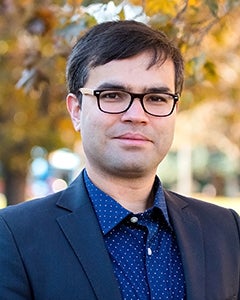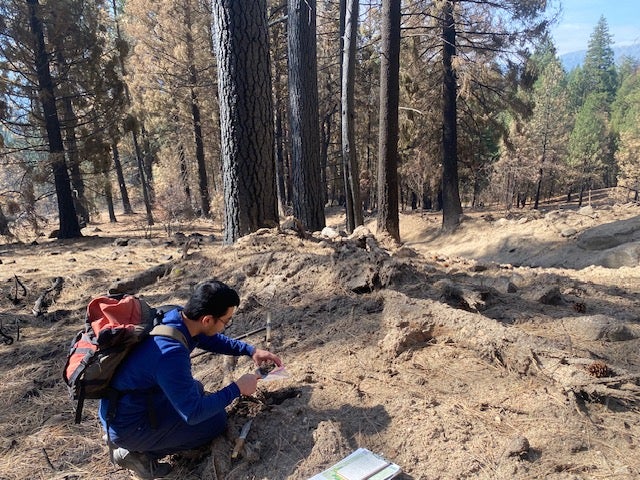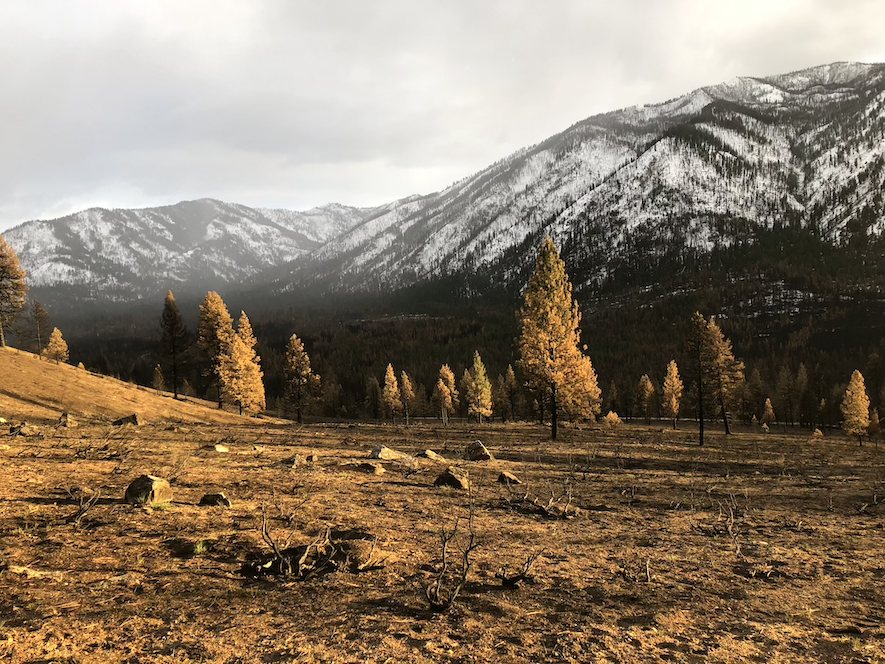
When the Table Rock Fire swept through the Boise foothills in 2016, burning thousands of acres and threatening nearby communities, Mojtaba (Moji) Sadegh had just arrived at Boise State University. A civil engineer and hydrologist by training, he saw the fire as a clear signal; Idaho needed more wildfire-focused research. Drawing on his expertise in water systems, he began to expand his work into wildfire prediction and prevention – applying data science to an urgent and evolving problem.
Born and raised in Iran, Sadegh studied civil and environmental engineering at Ferdowsi University of Mashhad and went on to earn a master’s in civil and environmental engineering, focusing on water resources management at the University of Tehran.
He then completed his doctoral degree in hydrology at the University of California, Irvine. Now, an associate professor in Boise State’s civil engineering department, Sadegh brings this foundation in environmental systems to a wide range of projects addressing fire, water and climate resilience.
Human-caused wildfires: predicting ignition hotspots

In partnership with the Joint Fire Science Program, Sadegh is developing a machine learning model to predict when and where wildfires caused by people are likely to occur.
“Most of the disastrous fires in terms of fatalities and destruction are human-started fires,” he said. “We have developed a machine learning model of when and where human ignitions of wildfires happen. If you can predict when and where they happen, we can come up with strategies for wildfire mitigation and prevention.”
By anticipating hotspots of human activity and environmental risk, fire managers can better allocate resources and potentially reduce destructive wildfires before they start.
Understanding soil burn severity
In a separate project with NASA, Sadegh and his team are working to assess the severity of soil damage following wildfires.
“When soil is burned the structure of the soil becomes disintegrated,” he said. “It’s very important for us to be able to predict the soil burn severity to be able to predict the post-fire hazard probability.”

Their model incorporates a wide range of environmental variables—including vegetation, wind speed, fire direction and how long a fire lingers in one area – to estimate how severely the soil has been affected. This information helps identify where the landscape is most vulnerable to other hazards in the aftermath of a fire.
Ignition trends in Idaho
Sadegh also leads a National Science Foundation–funded study focused specifically on fire ignition patterns in Idaho. His team examines how a warming climate, changing vegetation and population growth are creating conditions more receptive to fire.
“If you have more people around, there are more opportunities for an accidental fire to start,” he said. “We also have vegetation that is more receptive to an ignition which can then become a wildfire.”
The project looks ahead, modeling future fire scenarios to inform policies and land management strategies.
Unidentified fire causes: filling gaps
In some cases, wildfires are recorded without a known ignition source – either due to a lack of investigation or inconclusive evidence. But wildfire causes matters when it comes to prevention.
To address this, Sadegh’s team developed a model that analyzes historical data to estimate the likely cause of an unknown ignition. The model considers factors like weather conditions, topography, population density and proximity to roads.
“Now for unknown ignitions, we can assign a source,” Sadegh said. “Then we can use that information to draw inferences and come up with strategies to prevent future fires in certain locations.”
Droughts, heat waves and water modeling

Although wildfires have become a central focus of his research, Sadegh continues to explore fundamental hydrology questions. He studies how droughts and heat waves are interconnected and how they’re influenced by long-term climate patterns and shifting precipitation.
In a student-led project, he also investigates agricultural return flow, the process by which irrigation water returns to the river downstream.
“We divert water from the river, take it to our farmlands and then excess water will come back from the farmlands to the river downstream,” Sadegh said. “Being able to predict what that return flow is super important in terms of meeting the environmental flow regulations.”
This work not only informs water management decisions but also creates valuable learning opportunities for the graduate students he mentors.
Statewide collaboration with I-CREWS
Sadegh is also part of a statewide initiative known as I-CREWS (Idaho Community-engaged Resilience for Energy-Water Systems), an NSF Established Program to Stimulate Competitive Research – known as the EPSCoR initiative. This award investigates how energy and water systems will adapt to climate change and population growth.
“We are trying to develop machine learning models that can project what will happen to the nexus of water and energy as we grow as a state and as the climate warms,” he said. “We have these longer drought periods, hotter weather and more population. What really happens to our water resources and our energy portfolio?”
As part of the I-CREWS modeling team, Sadegh helps identify long-term risks and resilience strategies for communities across Idaho.
Grounded in Impact

For Sadegh, scientific discovery is most meaningful when it translates into real-world impact.
“I really wanted my work to have a tangible outcome that I could see and directly associate myself with,” he said. “Now we are working with fire managers that are right here in Boise and they’re contributing to national efforts. We’re giving them the tools they need to do their job better.”
He believes public engagement is critical too, especially when it comes to wildfires.
“Everyone in the West is affected by wildfires,” he said. “Science is helping us manage fires, minimize risks to communities and enhance response to wildfires, both direct and indirect. It’s very important for the public to be well informed.”
Whether predicting wildfire ignitions or mentoring students on water systems, Sadegh’s work reflects a commitment to resilience, community impact and preparing for an uncertain future.
This publication was made possible by the NSF Idaho EPSCoR Program and by the National Science Foundation under award number OIA-2242769.